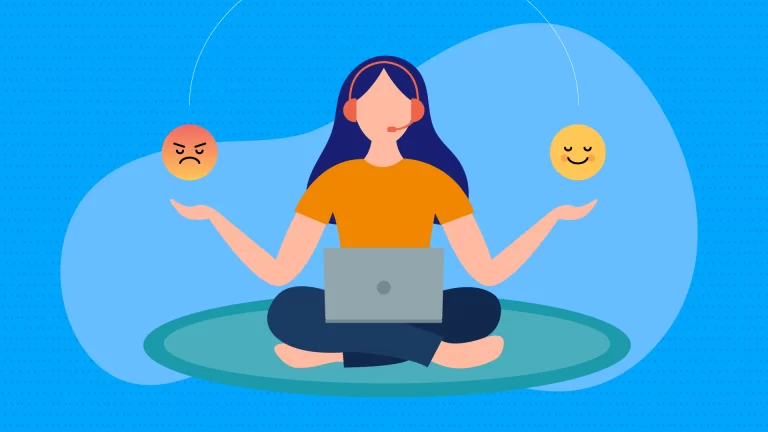Dealing with difficult customers is a challenge that virtually every business encounters at some point. Whether you work in retail, hospitality, or a service-based industry, it’s almost inevitable that you’ll come across a customer who is upset, frustrated, or dissatisfied. However, how you handle these situations can make a significant impact on your business’s reputation and long-term success.
In this blog, we will explore effective strategies for dealing with difficult customers and turning their negative experiences into positive ones.
1. Stay Calm and Listen Actively
The first step in dealing with difficult customers is to remain calm and composed. Remember that the customer may be upset about a legitimate issue, and your role is to help resolve it. Active listening is a crucial skill in this context. Allow the customer to express their concerns without interruption, and show empathy by nodding and making appropriate verbal cues to indicate your understanding. This demonstrates that you care about their problem and are genuinely interested in helping.

2. Empathise and Apologise
Once the customer has shared their concerns, empathise with their situation. A simple statement like, “I understand how frustrating this must be for you,” can go a long way in diffusing tension. Following empathy, offer a sincere apology for the inconvenience or problem they’ve experienced, even if it’s not directly your fault. Remember, apologising doesn’t necessarily mean accepting blame but rather expressing regret that the customer is unhappy.
3. Identify the Problem
After empathising and apologising, work with the customer to identify the root of the problem. Ask open-ended questions to gain a better understanding of the issue. For example, “Can you tell me more about what happened?” or “Is there anything specific that you’d like us to address?” This will help you uncover the cause of their dissatisfaction and find a solution more effectively.
4. Provide Solutions
Once you’ve identified the problem, offer practical solutions. Depending on the situation, this may include a refund, replacement, exchange, or a plan to resolve the issue. Make sure your solutions align with your company’s policies and are within reason. If a resolution isn’t possible immediately, communicate a timeline for when the customer can expect a resolution, and ensure you follow through.
5. Stay Professional
Dealing with difficult customers can be emotionally challenging, but it’s essential to maintain a professional demeanor throughout the interaction. Avoid arguing or becoming defensive, as this can escalate the situation further. Instead, focus on finding a solution and maintaining a respectful tone.
6. Involve a Supervisor When Necessary
In some cases, despite your best efforts, you may find it difficult to resolve a customer’s issue. At this point, it can be helpful to involve a supervisor or manager who may have more authority or experience in handling difficult situations. Be sure to communicate the situation accurately to the supervisor, so they can assist effectively.
Join the NoLimits Business Community
Are you a business owner looking to take your business to the next level? Join our innovative community of like-minded professionals and gain access to a wealth of valuable resources, including a community portal to chat with other business owners, ebooks, business development software, and growth events that will transform the way you do business. Best of all, these resources are completely free and will be available to you forever.
But the benefits of joining our NoLimits business community don’t stop there. By becoming part of our community, you’ll have the opportunity to connect with other business owners, share insights and ideas, and build valuable relationships that will help your business thrive. Don’t miss out on this amazing opportunity to supercharge your business and join us today!
7. Follow Up
After a difficult customer interaction, it’s a good practice to follow up with the customer once the issue has been resolved. This shows that you genuinely care about their satisfaction and value their feedback. A simple email or phone call to check in and ensure they are content with the resolution can turn a dissatisfied customer into a loyal one.
Conclusion
Dealing with difficult customers is an inevitable part of doing business, but it’s also an opportunity to demonstrate exceptional customer service. By staying calm, empathising, apologising, identifying problems, providing solutions, remaining professional, involving a supervisor when needed, and following up, you can turn challenging situations into positive experiences. Ultimately, successfully handling difficult customers can lead to improved customer loyalty and a stronger, more reputable business.
Join the NoLimits Business Community
Are you a business owner looking to take your business to the next level? Join our innovative community of like-minded professionals and gain access to a wealth of valuable resources, including a community portal to chat with other business owners, ebooks, business development software, and growth events that will transform the way you do business. Best of all, these resources are completely free and will be available to you forever.
But the benefits of joining our NoLimits business community don’t stop there. By becoming part of our community, you’ll have the opportunity to connect with other business owners, share insights and ideas, and build valuable relationships that will help your business thrive. Don’t miss out on this amazing opportunity to supercharge your business and join us today!

